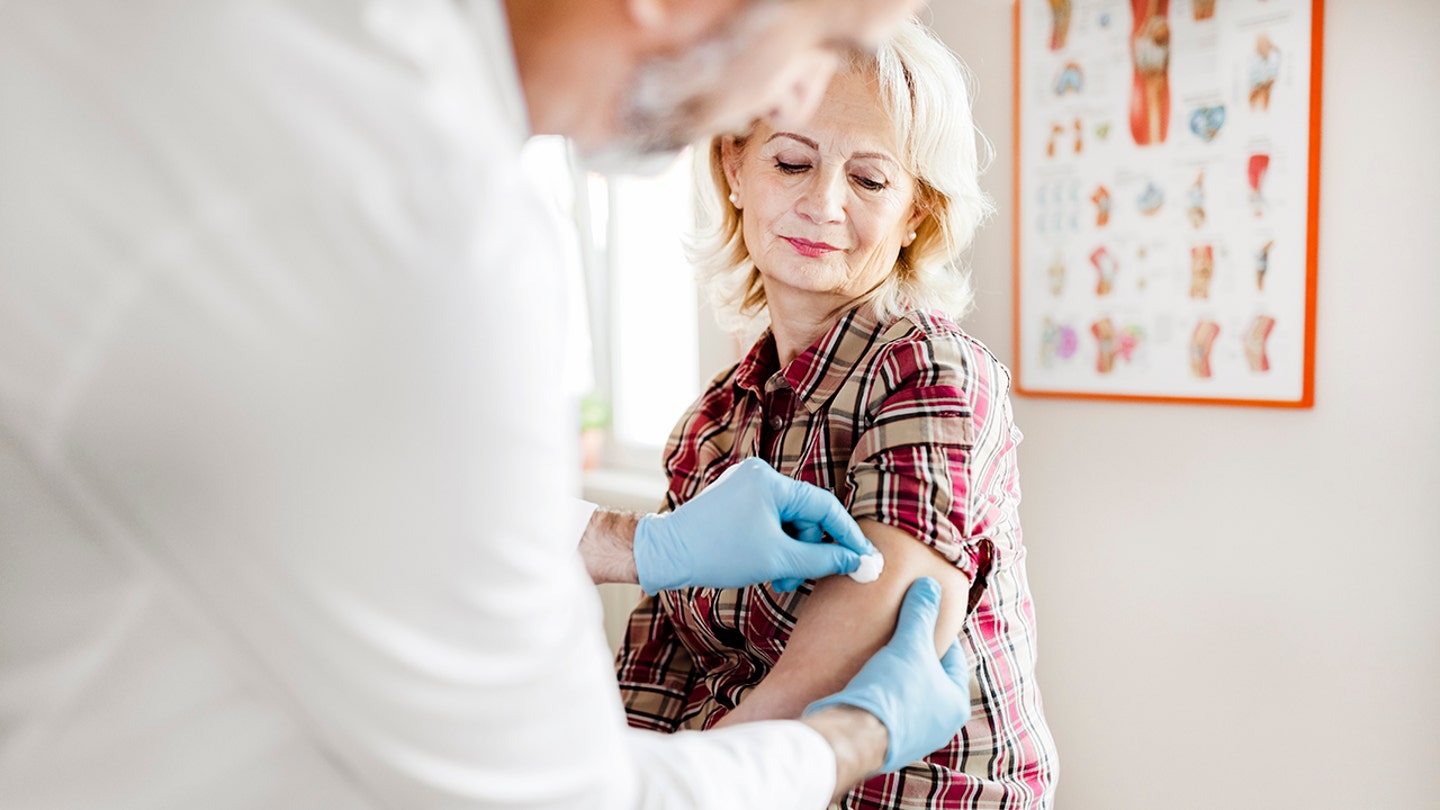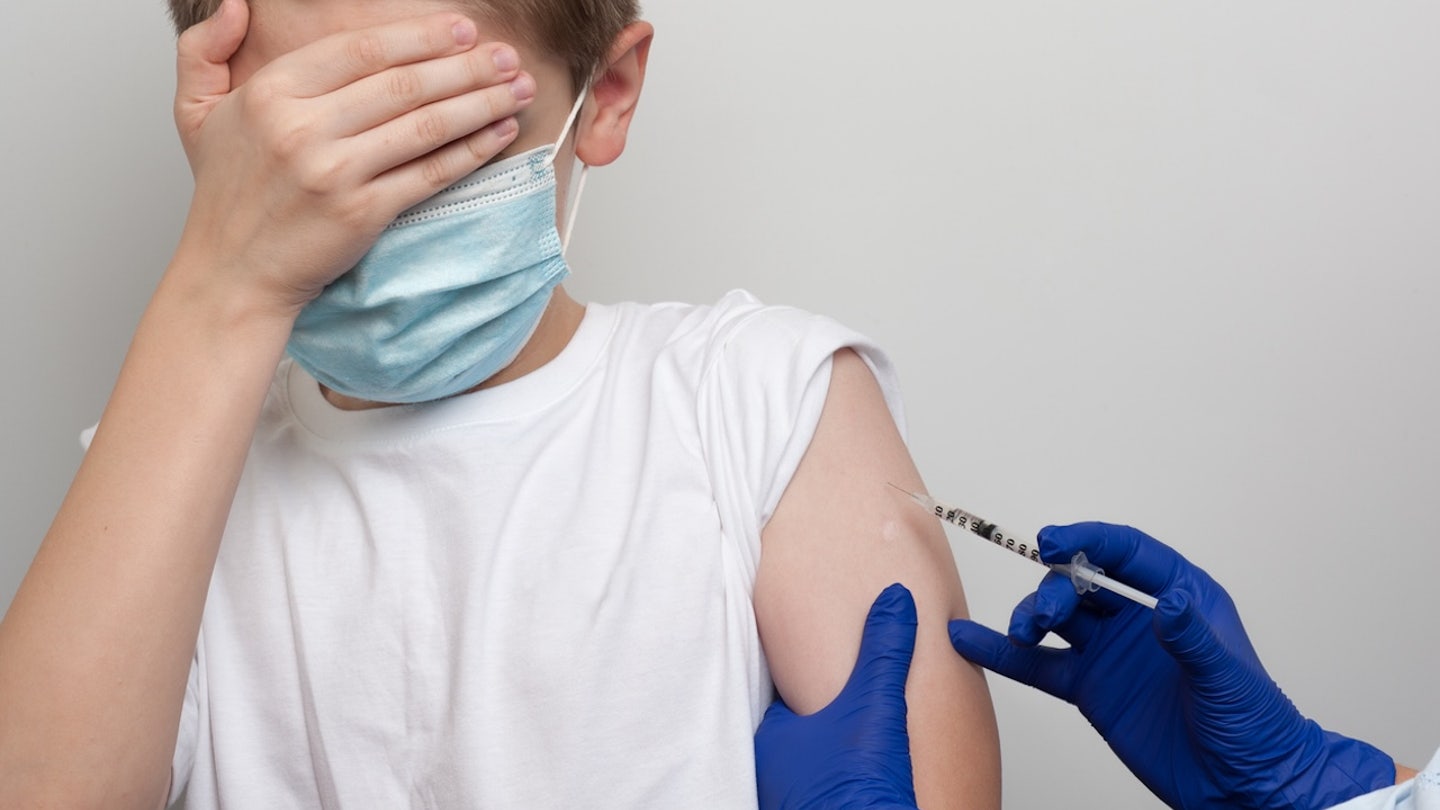NEWYou now have the option to listen to news articles!
Dental floss may have a new role beyond just maintaining oral health.
A recent study conducted by Texas Tech University and the University of North Carolina suggests that dental floss could potentially serve as a mechanism for delivering vaccines.
Through research on animal models, the scientists demonstrated that dental floss can effectively release vaccines through the tissue between the teeth and gums, as per a press release.
In the study, it was observed that using dental floss triggered the production of antibodies on “mucosal surfaces,” such as the lining of the nose and lungs.
The findings of this research were published in the journal Nature Biomedical Engineering.
A study led by Texas Tech University and the University of North Carolina indicates that dental floss could potentially double as a vaccine mechanism. (iStock)
Co-author Harvinder Singh Gill, a professor of chemical and biomolecular engineering at North Carolina State University, explained that mucosal surfaces play a crucial role as an entry point for pathogens like influenza and COVID.
Traditionally, vaccines are administered through injections, leading to the production of antibodies primarily in the bloodstream, Gill noted.

The researchers demonstrated that dental floss can effectively release vaccines through the tissue between the teeth and gums. (iStock)
However, administering vaccines through mucosal surfaces stimulates antibodies not only in the bloodstream but also on mucosal surfaces, offering an additional line of defense against infections before pathogens enter the body.
The vaccine is delivered through the “junctional epithelium,” a thin layer of tissue in the deep pocket between the tooth and gum, as this tissue lacks the same barrier as other tissue linings, allowing the release of immune cells into the body.
In the study, a peptide flu vaccine was added to unwaxed dental floss and used to floss the teeth of lab mice, with the effectiveness of this floss-delivered vaccine compared to nasal or oral delivery techniques.
“It would be easy to administer, and it addresses concerns many people have about being vaccinated with needles.”
Rohan Ingrole, a Ph.D. student at Texas Tech University and the first author of the study, highlighted that applying the vaccine via the junctional epithelium resulted in a superior antibody response on mucosal surfaces compared to the current standard of placing the vaccine under the tongue.
Moreover, the flossing technique offered comparable protection against the flu virus as compared to nasal delivery of the vaccine.

With traditional vaccine injections, antibodies are primarily produced in the bloodstream, as noted by the researchers. (iStock)
The test was repeated for various vaccine types, including proteins, inactivated viruses, and mRNA, all of which elicited robust antibody responses in the bloodstream and across mucosal surfaces with the flossing technique.
The research team plans to further evaluate the efficacy of vaccine delivery to the epithelial junction in humans using floss picks, which are easier to handle.
“This method of vaccination could be simple to administer and alleviate concerns regarding needle injections,” stated Gill. “Additionally, we anticipate that this technique would be cost-effective compared to other vaccine delivery methods.”

For all vaccine types tested, the flossing technique produced robust antibody responses in the bloodstream and across mucosal surfaces, according to the researchers. (iStock)
Hua Wang, an assistant professor of materials science and engineering at the University of Illinois’ Grainger College of Engineering, shared his perspective on the findings, highlighting the potential of floss-based vaccination to avoid needle injections or any discomfort.
Wang emphasized that the vaccine components in the floss coating could penetrate the junctional epithelium in the gingival sulcus, leading to systemic antibody responses.
He noted that if the floss-based vaccination method undergoes comprehensive evaluation, it could enhance patient compliance.
Limitations and Future Research
The researchers acknowledged limitations and drawbacks associated with floss-based vaccines, such as the exclusion of babies and toddlers without teeth and uncertainties regarding its efficacy in individuals with gum disease or oral infections.
There are still many unanswered questions about this experimental vaccination method, including potential side effects and the exact path of vaccine components in generating immune responses.

“This study presents a promising floss-based vaccination method that can avoid needle injection or any potentially painful procedure,” an expert said. (iStock)
Further research is needed to understand the impact of gingival tissue infection on vaccination and potential local and systemic side effects associated with this method, as well as ensuring the efficacy of floss-based vaccines compared to conventional needle-based vaccines.
The study received funding from the National Institutes of Health (NIH) and the Whitacre Endowed Chair in Science and Engineering at Texas Tech University.
Melissa Rudy serves as the senior health editor and is a member of the lifestyle team at Fox News Digital. For story tips, reach out to melissa.rudy@fox.com.





